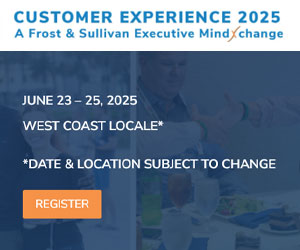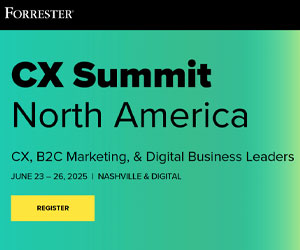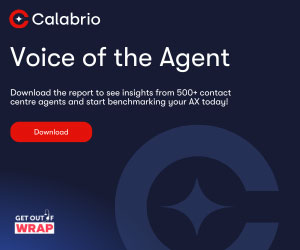As a thinker, I am struck by how rare original thinking is in the organisational world. As a thinker, I am struck by how little thinking – as in stopping and reflecting on that which is occurring and the pattern of this occurrence – occurs in organisations. As a thinker, I am struck by how little space exists within organisational life for ideas to be entertained and grappled with before the mindless rush to implement these ideas, usually through some off the shelf methodologies, methods, tools and techniques.
I say that the idea of Customer Loyalty had power. And this power vanished when we rushed to turn this idea into practical customer loyalty programmes: loyalty cards, databases, offers and points.
I say that the idea of Relationship Marketing had power. And this power was drained and Relationship Marketing turned lifeless when the idea of Relationship Marketing was turned into the technology of CRM: systems that enslave human beings in data capture and script/process following slaves.
I say that the idea of Customer Experience has awesome power. And many are bleeding this idea dry, void of power, by turning it into the methodology of customer journey / touchpoint mapping, the blind worship at the voice of the customers, and the technology of Customer Experience.
What is it that I am getting at? Let’s see if I can communicate that which I am seeking to communicate to the practical people that dominate organisational life. I invite you to read the following words of wisdom (bolding is my work):
The word idea supposedly originates in the Greek word eidos, which means something seen like a form and a way of seeing like an eye, a perspective. So, ideas are not only things you can pick up and ponder. They also give you eyes, new ways of seeing things. Ideas are already operating in our perspectives, the way we look at things. We take our usual ideas for granted, and so, ideas have us rather than we have them….
Is the idea fertile, fecund? Does it make you think? Is it surprising, shocking? Does it stop you from habits and bring a spark of reflection? Is it delightful to think it? Does it seem deep? Important? …. This requires you to ponder it, which means weight it, feel its weight…. Pondering is an action of its own and keeps you holding the idea, from letting it go into other kinds of action before it is fully appreciated. Meanwhile you get a better feel of the idea….
You know, to have an idea and thinking about the idea are two different things, and being practical often means skipping over the hard thinking part…
For ideas to be therapeutic, that is, beneficial to the soul and body politic, they must gather into themselves, garnering force, building strength, like great movers of the mind’s furniture, so that the space we inhabit is rearranged. Your thoughts, feelings, perceptions, memories have to be moved around in new ways, because the furniture has been moved.
A long lasting idea, like a good poem or a strong character in a movie or a novel, continues to affect your practical life without ever having been put there. Ideas that live, live in us and through us into the world. Viable ideas have their own innate heat, their own vitality. They are living things too.
But first they have to move your furniture, else it is the same old you, with you same old habits, trying to apply a new idea in the same old way. Then nothing happens at all except the loss of the idea as “impractical” in your haste to make it “practical”.
– James Hillman, We’ve Had A Hundred Years of Psychotherapy And The World’s Getting Worse
It occurs to me that the conversations that take place here, at The Customer & Leadership Blog, are simply an ongoing exploration and pondering of the ideas of customer relationships, relationship marketing, customer service, customer loyalty, customer experience, customer-centricity, and leadership.
I am no expert, no guru, in customer relationships (CRM), relationship marketing, customer service, customer loyalty, customer experience, customer-centricity, nor in leadership. Yet, it occurs to me, that it might just be that I have grappled with these ideas at a deeper level than many. Therefore, any value that i create for you – the person who listens to my speaking – arises out of my willingness to stay with the idea rather than rushing to provide you with a silver bullet for your organisational ills.
Why I have shared this with you? To provoke thought: to provoke you into doing deeper thinking into the Customer realm before you go and buy the latest snake oil from gurus, experts, consultancies, and IT vendors. Incidentally, don’t reach for the dictionary to look up definitions of all things customer: customer service, customer relationship management, customer experience etc. Why? Definitions only provide the illusion of knowledge and understanding. There is no replacement for original thinking. A good start would be the following questions:
- What world of possibility does the idea of Customer Experience open up for us and our customers?
- What might Customer Experience Leadership look like, feel like, sound like, taste like – for us, for our customers?
- What is the first step on the journey of Customer Experience Leadership for us? Is it really getting access to the voice of the customer? Or is it doing that which we know needs to be done for our actions to be in tune with our words?
And finally, I invite you to consider that many if not most organisations have failed to make a success of relationship marketing, CRM, customer loyalty, customer experience etc. because these ideas have failed to ‘move your furniture’, leaving the same old you, with the same old habits, trying to apply these radically new ideas in the same old way.
If you have made it this far into the conversation, I say thanks for listening. These conversations are not easy, not simple. This is deliberate – these conversations are designed to provoke thought from the thoughtful. They are not for the impatient looking for the ten steps to customer success.
Author: Guest Author
Published On: 22nd Dec 2014 - Last modified: 5th Feb 2019
Read more about - Archived Content


























